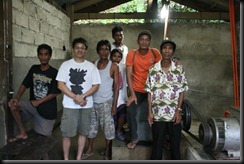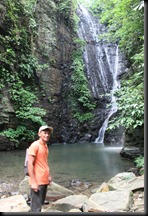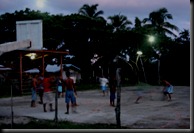Last Friday, June 12, the El Nido Foundation formally launched “Reef Fishes of El Nido”, a book resulting from the extensive study done by Dr. Gerry Allen and Dr. Mark Erdmann. It is a r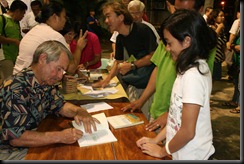 esult of countless dives, each averaging over an hour, in 2007. We were lucky to have been invited. Dr. Erdmann was not able to make it, but Dr. Allen was. He signed books, including the one my daughter bought.
esult of countless dives, each averaging over an hour, in 2007. We were lucky to have been invited. Dr. Erdmann was not able to make it, but Dr. Allen was. He signed books, including the one my daughter bought.
 I first set foot in El Nido on January 23, 1989. In that year alone I tallied 594 dives within Bacquit Bay over 287 days, faithfully logging each dive in my log book, which I still keep. You see, I worked there as a divemaster and dive instructor for several years. The diving was great in those days.
I first set foot in El Nido on January 23, 1989. In that year alone I tallied 594 dives within Bacquit Bay over 287 days, faithfully logging each dive in my log book, which I still keep. You see, I worked there as a divemaster and dive instructor for several years. The diving was great in those days.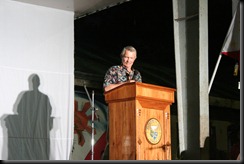
Once, two other divers and I saw a huge dorsal fin sticking out of the water near our boat about two kilometers off Popolcan Island. We donned our masks, fins and snorkels and jumped in the water, and there I saw my first whale shark. I saw my second whale shark while scuba diving at Kulasa Point, between Matinloc and Inambuyod Islands. Between January and April of each year, we would see manta rays almost on every dive. There were turtles, sharks, and barracudas. There were also the seldom seen saddleback clownfishes, leafy sea dragons, and other smaller and rarer creatures. Foot-long groupers and snappers were ordinary for any given dive.
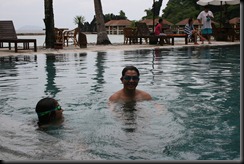 Coral was good too, but not as colorful as the ones in Anilao, Batangas. Bacquit Bay does not have the strong currents of Anilao, and currents bring food to the coral, but enough nutrients were circulating so that the reefs in the bay were respectably varied. Even then, there were signs of blast fishing in some of the dive sites. And when diving activities waned in the mid-nineties, I’ve been told that blast fishing became more rampant, and the live fish trade flourished.
Coral was good too, but not as colorful as the ones in Anilao, Batangas. Bacquit Bay does not have the strong currents of Anilao, and currents bring food to the coral, but enough nutrients were circulating so that the reefs in the bay were respectably varied. Even then, there were signs of blast fishing in some of the dive sites. And when diving activities waned in the mid-nineties, I’ve been told that blast fishing became more rampant, and the live fish trade flourished.
Then came the kicker: the 1998 El Niño, when ocean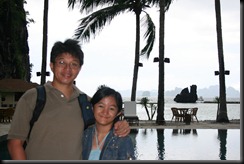 temperatures rose by several degrees. An estimated 16% of the world’s coral died, and the reefs of El Nido were not exempt. A great many number of corals turned luminous green and blue, then white, and finally sections upon sections of the reefs died.
temperatures rose by several degrees. An estimated 16% of the world’s coral died, and the reefs of El Nido were not exempt. A great many number of corals turned luminous green and blue, then white, and finally sections upon sections of the reefs died.
When several areas in the bay were declared Marine Protected Areas, the marine life in those areas began to bounce back. In the Tres Marias site particularly, where Seacology funded the installation of ceramic reef modules, the results are astounding. Where  there was coral rubble a scant 3 years ago, there is now a thriving coral colony on each of the ceramic modules. Groupers, snappers, wrasses, and other reef fishes have returned in large numbers.
there was coral rubble a scant 3 years ago, there is now a thriving coral colony on each of the ceramic modules. Groupers, snappers, wrasses, and other reef fishes have returned in large numbers.
So far, Drs. Gerry Allen and Mark Erdmann have documented 813 species of fish in El Nido. Dr. Allen says that the next book will be written by someone from El Nido who will be a Marine Biology Scholar of the Gerry Allen Scholarship Program (managed by the El Nido Foundation). Dr. Allen set the scholarship up just for the people of El Nido, and it will be funded from the proceeds of the book.
Now that is one for the books.

